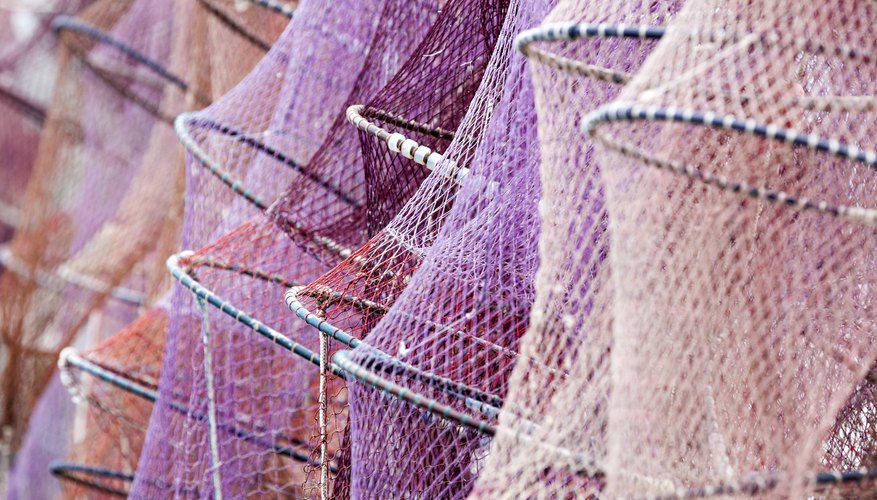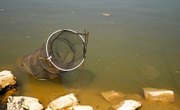
Traps are an effective way to catch catfish. Relatively easy to set and retrieve, these traps can catch many fish in a relatively short period of time. Once set, there is no need to attend to these traps until the time comes to see if they hold any catfish. Not all states allow the use of catfish traps. It is important to check with your local fishing game authority for rules and regulations regarding their use before you set a trap.
Trap Selection
Choose a catfish trap that you can set and manage. Smaller welded wire traps and wooden slat traps are easier for one person to set and retrieve. Hoop nets may require a boat to set and retrieve them properly. For these larger nets, a two-man team works well to empty catfish from the trap.
Trap Inspection
Inspect your trap regularly to ensure it is in proper repair. Loose door fittings, holes and netting or wire mesh, frayed recovery lines and other damage can result in lost fish or even a lost trap.
Bait Selection
Catfish are predominantly bottom feeders and several different types of bait will draw them to your trap. Try a can of dog or cat food with holes punched in it. Chicken livers or cut bait in a fine mesh nylon sack also work well. When baiting your trap, attach the bait properly and securely.
Position
Position the trap with the mouth facing downstream. This will prevent any leaves, sticks or other debris from washing into your trap. Also, ensure that your trap is secured well to a tie-off point or stake in the river bottom to prevent it from washing away, should the current increase.
Location
Look for locations to place your trap where catfish tend to congregate, such as deep holes or cuts in river banks. Narrow points in rivers and streams that force more fish through a smaller area also make good spots for traps. When fishing a lake, place the trap parallel to the bank. Catfish will often swim along the shore and into the trap. Mark the location of your trap so that it is easy to find when you return.
Check the Trap
If your trap captures a lot of catfish and becomes full, it can be difficult for the fish to move around. If the catfish cannot move easily within the trap, they will not get enough oxygen and may die. To prevent this, check your traps at least every 12 hours.
References
Writer Bio
In Jacksonville, Fla., Frank Whittemore is a content strategist with over a decade of experience as a hospital corpsman in the U.S. Navy and a licensed paramedic. He has over 15 years experience writing for several Fortune 500 companies. Whittemore writes on topics in medicine, nature, science, technology, the arts, cuisine, travel and sports.



